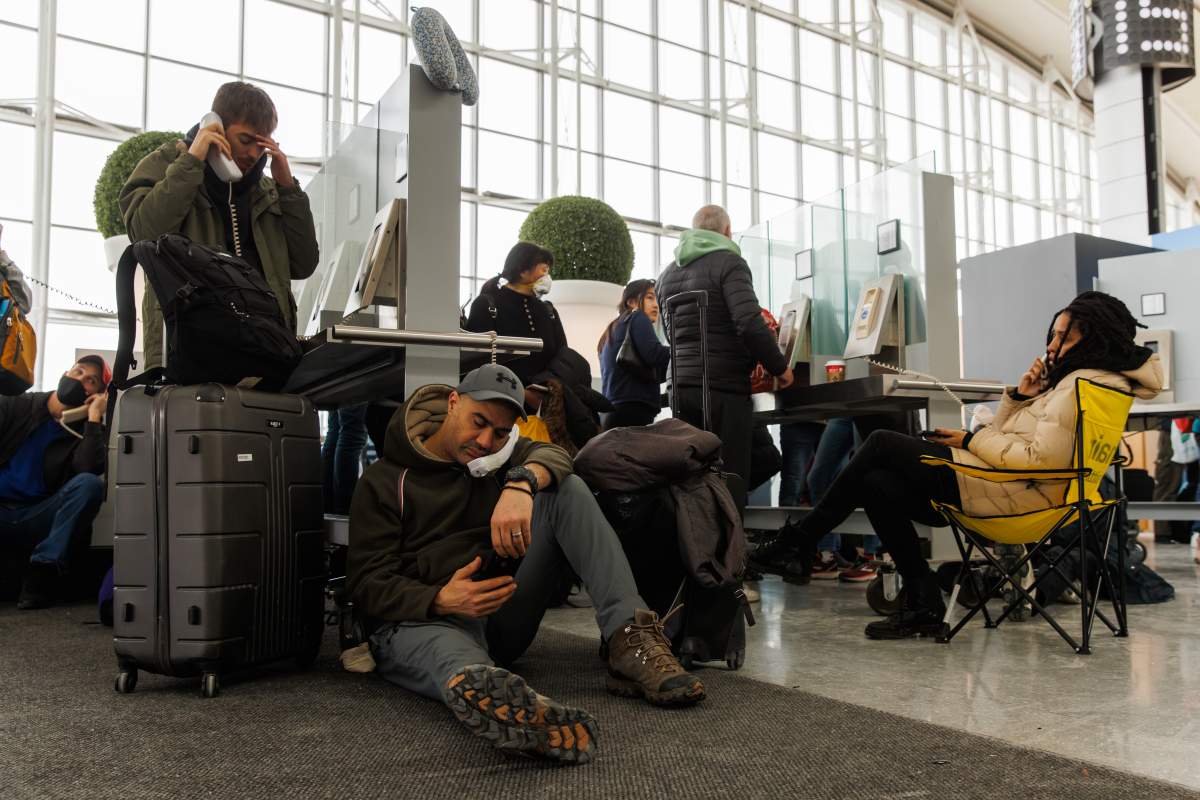After a chaotic 2022, Canada’s air travel sector says it is “winter ready” as travellers will be hoping for a less turbulent time over the holiday period this year.

Last winter, a major snowstorm disrupted travel plans for thousands of Canadians, cancelling or delaying flights around Christmas, with the addition of mechanical issues, poor communication, and lost or misplaced luggage making matters worse.
Transport Minister Pablo Rodriguez said last week that he has met with the CEOs of different airlines and they have assured him that they have a “program in place” with increased staffing and protocols that will hopefully avoid what happened last year.
“We saw what happened last year during Christmas. We also saw what happened last year in summer. And that was a huge challenge for everyone,” he told reporters in Ottawa on Dec. 12.
In preparation for this winter, Canadian airlines and airport say they have rolled out a series of new measures from boosting staff, advanced snowplows, to real-time weather monitoring equipment and other digital tools for passengers.
“Winter will always bring challenging weather, so we are reinforcing tools to equip passengers with more information and control over their travel experience,” Deborah Flint, president and CEO of the Greater Toronto Airports Authority, said in a statement last month, announcing GTAA’s winter travel plans.

Besides increasing staffing at Toronto’s Pearson International Airport, there will be newly commissioned advanced snowplows, expanded de-icing capacity and predictive technologies for weather and delay forecasting, the GTAA said in the Nov. 30 statement.
The airport will also use artificial intelligence for “more efficient baggage handling.”
The Montreal-Trudeau International Airport remained “fully operational” last winter despite the snowstorm.
For December, the airport is anticipating passenger traffic to be higher than pre-pandemic levels in 2019, when there were 1.6 million passengers, said Eric Forest, spokesperson for Aéroports de Montréal (ADM).
“ADM’s operation teams have been working hand in hand with all partners in the airport community, including airlines and government agencies, to optimize airport operations and ensure that the process is as smooth as possible for travellers,” he said in an emailed response to Global News.

Out west, the Vancouver International Airport (YVR) is expecting to see roughly two million passengers over the month of December – a 10 per cent increase from 2022 – with travel volume peaking Dec. 20-22.

Get breaking National news
“After challenges in the busiest week of holiday travel in December 2022, YVR has spent this year proactively turning lessons learned into actionable plans,” the Vancouver Airport Authority said in a statement released on Dec.5.
Over the past year, the airport has invested $40 million to improve its operations, including the installation of real-time weather monitoring equipment, new gating and towing protocols, adding more frontline staff, baggage technology, digital sensors and other tools to help the flow of passengers, VAA said in its statement.
Five new electric de-icing vehicles have been added to the existing fleet and in the event of a major snowstorm, YVR will make use of more than 100 pieces of snow removal equipment.
In Alberta, the Calgary International Airport (YYC) also increased staffing and upgraded its fleet of snow sweepers.
“These new sweepers will allow us to clear our runways faster while continuing to keep our airfield operations running safely and efficiently,” Chris Miles, Calgary Airport Authority’s chief operating officer, told Global News in an emailed response.
How airlines are preparing for winter travel
Among large North American carriers, Canada’s two biggest airlines ranked last for being on time in October, according to a recent report by aviation data company Cirium.
Winter weather can only further complicate things for travellers.
Air Canada told Global News it is fully staffed and has made advance preparations for the winter season, such as ensuring there is enough glycol to de-ice planes, their equipment is prepared for winter weather, and also setting aside designated spare aircraft.
“Severe weather can impact our operations, but our top priority is to always operate safely, even if that requires delays or cancellations,” a spokesperson for the airline said.
Adding to its winter toolkit, Air Canada on Dec. 1 introduced a new baggage tracking feature on its mobile app to help travellers stay updated on where their luggage is.

WestJet is anticipating flying almost 1.5 million passengers – similar to 2019 travel volumes — for the upcoming holiday period.
A spokesperson for the Calgary-based airline said Dec. 22, 28 and 29 are expected to be their busiest days with over 70,000 passengers booked to fly WestJet.
An SMS text notification system will let travellers either change or cancel their travel plans during a disruption, something that they couldn’t do themselves without contacting the airline last winter.

Flair Airline’s CEO said the air travel sector is “much better prepared now” with improved communication protocols between airlines and airports and better snow management.
“I think the industry has taken a lot of lessons out of what happened last winter,” Stephen Jones said in an interview with Global News. “We’ve done a lot of work with the airports over the last year. They did a big reflection on what went wrong last year and how we can work better together.”
Air Transat said its winter holiday strategy includes operating at a reasonable capacity, having reserve crews in place and collaborating closely with its partners and suppliers.
“In case of events beyond our control, such as severe weather, our priority is to swiftly offer alternative flight options to reduce passenger inconvenience,” said Marie-Christine Pouliot, senior advisor of public relations, in an emailed statement.
Sunwing has added more pilots, cabin crew and control centre staff to support its winter operations. The airline said in a Nov. 16 release that it has “enhanced its flight alert system to provide customers with more timely and consistent communication related to any flight disruptions.”










Comments